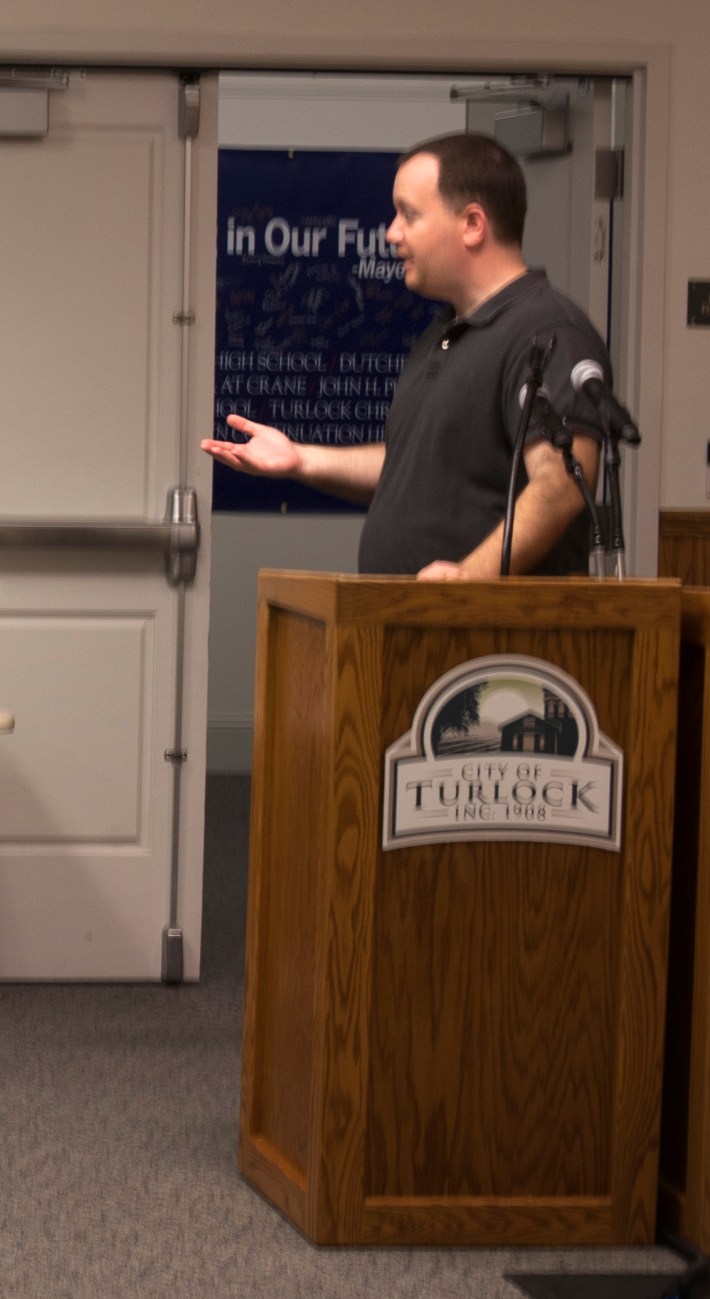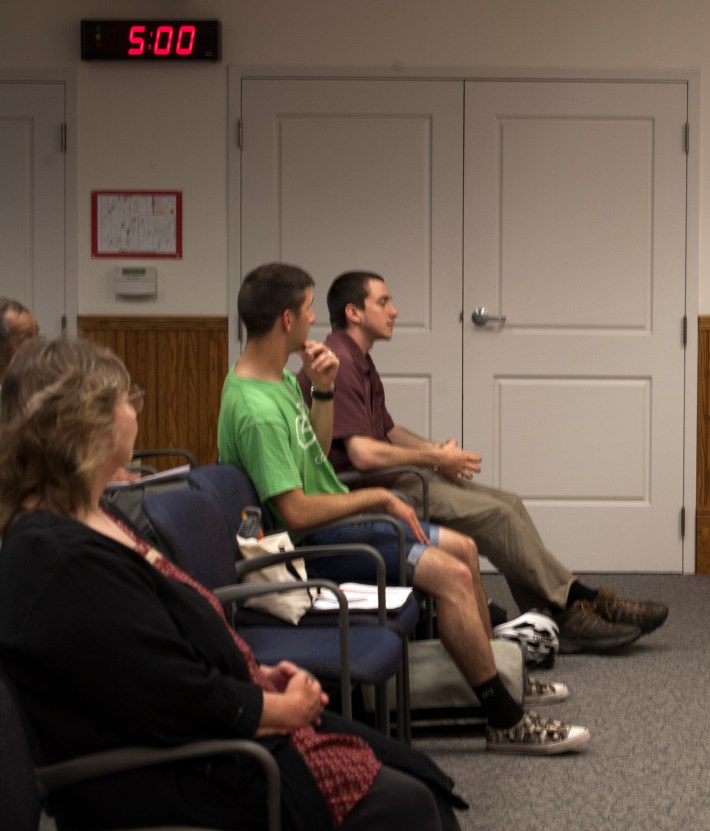
The statewide Active Transportation Program (ATP), the main source of funding for projects that encourage walking and biking in California, is in the midst of preparing for its next round of grants. Applications for a total of about $240 million will be accepted starting April 15, for projects that will be funded starting in 2019.
Among the cities and counties hoping to snag some of that money is Turlock, which successfully competed for more than $1 million in the last round. Those funds are being used for bicycling and walking improvements along a busy thoroughfare and around an elementary school.
This time around, the city is asking the community for ideas on what bike and pedestrian projects people want to see. Wayne York, transportation engineering supervisor with the city of Turlock, said at a recent public outreach meeting that one of the lessons learned in the last ATP application process is that “public input really made a difference.”
Public outreach efforts include bilingual announcements inserted into utility bills, press releases, a website devoted to information on the ATP process, and social media efforts to inform people about how to submit their ideas. The city is also holding a total of four community meetings to talk through the community's ideas in person.
Attendance at the meetings has been slim: about twenty people total have shown up at the three community meetings held so far. While it may sound sparse for a city of 70,000 residents, York said that is “pretty good for Turlock,” especially considering that the ATP is not controversial. Also, the benefits are years away, which makes it seem a bit more abstract.
“Our community is also largely a motor vehicle community, so bike and pedestrian issues are not high priorities for many of our citizens,” York wrote Streetsblog in an email. “We are working to slowly but surely change the culture and views towards non-motorized transportation.”
He added that, while it would be nice to have more participants at the meetings, it is also important to note that the quality of the feedback is more important than the quantity. He recounted a story about a comment from one person at a community meeting for Cycle 2 that convinced the city to modify its proposal for Christoffersen Parkway. The project now includes bike improvements along Crowell Road, in addition to the Class I connector on North Tegner and the bicycle route along the parkway, because a CSU Stanislaus student spoke at the meeting about the difficulties of navigating by bike in the area.
Terry Vilkofsky is a resident who learned about the meeting through a utility bill insert. She came to submit her idea for sidewalks along East Avenue near the Turlock Flea Market where many people walk to and from the market on Tuesdays. Although she found out that that part of town is under the county's jurisdiction and therefore does not fall within the scope of the city's ATP application, she wasn’t sorry she came to the meeting.
“I was outside working on my garden, thinking: this is such a beautiful day I can stay here all day,” she said of the first sunny day in Turlock after a week of rain. “But no, [it was important] to come down to this meeting.”

Jeffrey Sparks and Simon Berdino are members of Bike Turlock (formerly the Bike Turlock Project), a grassroots group formed to educate and encourage bicycling. They came to offer ideas to help cyclists and pedestrians.
“Speaking as a pedestrian,” Sparks said, a good project would be to add pedestrian signals to three intersections at Olive Avenue: Center, Palm, and Thor streets. Those crossings have traffic signals and crosswalks, but no pedestrian signals to indicate when it is safe to cross.
York also said he has already received numerous ideas via email, phone, the internet, and in-person meetings with major stakeholders like the school district. City staff will consider past concepts that didn't move forward in previous funding rounds as well. For instance, there was a proposal to add a sidewalk near a school bus stop site, which can be developed further.
He feels confident that a well-thought-out project can be developed and submitted in time, given the feedback they have received. The city will spend most of April refining the list of projects, and will release the results in early May. At that point, a second outreach effort will be conducted to solicit support from the community.
For city staff, a lot of the outreach has included education not only about jurisdiction, but about the difference between this grant and the city's ATP plan, and even the general concept of active transportation. “I’ve been reviewing a lot of Facebook comments and I don’t think people have a good idea of it,” York said. Streetsblog took a look at comments that have been posted on the city’s Facebook page, and saw lots of suggestions for adding trails and fixing roads. Neither of those strategies contribute to walking or bicycling as a means of transportation.
City staff is also open to non-infrastructure projects, those that have to do with education, encouragement, and enforcement. Standalone education programs and those coupled with infrastructure projects are eligible for ATP grants. According to Caltrans spokesman Jason Probst, the ATP is very competitive, and applications fare best if they incorporate both an infrastructure and a non-infrastructure component such as education, encouragement, or enforcement. Safe Routes to School projects have also been successful, as well as projects with separated bike and/or walk facilities.
At one of the community meetings, York talked extensively with Sparks and Berdino about the need to educate drivers, pedestrians, and bicyclists on how to co-exist on the road and sidewalks at one of the community meetings.
If that is the route the city wants to go, said Sparks, “I want to be a part of it."
The last scheduled workshop to submit ideas will take place on Thursday, April 7, from 6-8 p.m. at Turlock City Hall. For more information on Turlock’s community meetings or to submit comments or ideas, visit the project website here.





